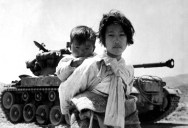This Day In History – July 27th

CHICAGO RACE RIOT OF 1919 – JULY 27, 1919

Photograph by Chicago Daily News
The Chicago Race Riot of 1919 was a major racial conflict that began in Chicago, Illinois on July 27, 1919 and ended on August 3. During the riot, dozens died and hundreds were injured. It is considered the worst of the approximately 25 riots during the Red Summer of 1919, so named because of the violence and fatalities across the nation. The combination of prolonged arson, looting and murder was the worst race rioting in the history of Illinois.
The sociopolitical atmosphere of Chicago was one of ethnic tension caused by competition among many new groups. With the Great Migration, thousands of African Americans from the South had settled next to neighborhoods of European immigrants on Chicago’s South Side, near jobs in the stockyards and meatpacking plants. The ethnic Irish had been established first, and fiercely defended their territory and political power against all newcomers. Post World War I tensions caused frictions between the races, especially in the competitive labor and housing markets.
Overcrowding and increased African American militancy by veterans contributed to the visible racial frictions. Also, ethnic gangs and police neglect strained the racial relationships. According to official reports, the turmoil came to a boil after a young African American was struck by a rock and died at an informally segregated beach. Tensions between groups arose in a melee that blew up into days of unrest.
William Hale Thompson was the Mayor of Chicago during the riot. Although future mayor Richard J. Daley never officially acknowledged being part of the violence, at age 17 he was an active member of the ethnic Irish Hamburg Athletic Club, which a post-riot investigation named instigators in attacks on blacks. In the following decades, Daley continued to rise in politics to become mayor for twenty years. [Source: Wikipedia]

FIRST APPEARANCE OF BUGS BUNNY – JULY 27, 1940

Artwork by Tex Avery via John K. Stuff
A Wild Hare (re-released as The Wild Hare) is a 1940 Warner Bros. Merrie Melodies animated short film. It was produced by Leon Schlesinger Productions, directed by Tex Avery, and written by Rich Hogan. It was originally released on July 27, 1940. A Wild Hare is considered by many film historians to be the first “official” Bugs Bunny cartoon. The title is a play on “wild hair”, the first of many puns between “hare” and “hair” that would appear in Bugs Bunny titles. The pun is carried further by a bar of I’m Just Wild About Harry playing in the underscore of the opening credits.
A Wild Hare is noteworthy as the first true Bugs Bunny cartoon, as well as for settling on the classic voice and appearance of the hunter, Elmer Fudd. Although the animators continued to experiment with Elmer’s design for a few more years, his look here proved the basis for his finalized design. The design and character of Bugs Bunny would continue to be refined over the subsequent years, but the general appearance, voice, and personality of the character were established in this cartoon.
Bugs is unnamed in this film, but would be named for the first time in his next short, Elmer’s Pet Rabbit, directed by Chuck Jones. The opening lines of both characters—”Be vewy, vewy quiet, I’m hunting wabbits” for Elmer, and “Eh, what’s up Doc?” for the rabbit—would become catchphrases throughout their subsequent films.
The short was nominated for an Academy Award for Best Short Subject: Cartoons. Another nominee was Puss Gets the Boot (the first Tom and Jerry cartoon), directed by William Hanna and produced by Rudolf Ising. Both nominations lost to The Milky Way, another MGM Rudolph Ising production. [Source: Wikipedia]
Bugs’s nonchalant carrot-chewing stance, as explained many years later by Chuck Jones, and again by Friz Freleng and Bob Clampett, comes from the movie It Happened One Night, from a scene where the Clark Gable character is leaning against a fence eating carrots more quickly than he is swallowing (as Bugs would later often do), giving instructions with his mouth full to the Claudette Colbert character, during the hitch-hiking sequence. This scene was so famous at the time that most people immediately got the connection.
The line, “What’s up, Doc?”, was added by director Tex Avery for this short. Avery explained later that it was a common expression in Texas where he was from, and he didn’t think much of the phrase. But when this short was screened in theaters, the scene of Bugs calmly chewing a carrot, followed by the nonchalant “What’s Up, Doc?”, went against any 1940s audience’s expectation of how a rabbit might react to a hunter and caused complete pandemonium in the audience, bringing down the house in every theater. Because of the overwhelming reaction, Bugs eats a carrot and utters some version of the phrase in almost every one of his cartoons after that, sometimes entirely out of context as compared to this original use. [Source: Wikipedia]

Photograph via John K. Stuff
FIRST COMMERCIAL JET AIRLINER FLIGHT – JULY 20, 1949

Photograph by Arpingstone
The de Havilland DH 106 Comet was the world’s first commercial jet airliner to reach production. Developed and manufactured by de Havilland at the Hatfield, Hertfordshire, United Kingdom headquarters, it first flew on July 27, 1949 and was a landmark in aeronautical design. It featured an extremely aerodynamically clean design with its four de Havilland Ghost turbojet engines buried into the wings, a low-noise pressurised cabin, and large windows; for the era, it was an exceptionally comfortable design for passengers and showed signs of being a major success in the first year upon launching.
However, a few years after introduction into commercial service, Comet airframes began suffering from catastrophic metal fatigue, which in combination with cabin pressurisation cycles, caused two well-publicised accidents where the aircraft tore apart in mid-flight. The Comet had to be withdrawn and extensively tested to discover the cause; the first incident had been incorrectly identified as having been caused by an onboard fire. Several contributory factors, such as window installation methodology, were also identified as exacerbating the problem. The Comet was extensively redesigned to eliminate this design flaw. Rival manufacturers meanwhile developed their own aircraft and heeded the lessons learnt from the Comet.
Although sales never fully recovered, the redesigned Comet 4 series subsequently enjoyed a long and productive career of over 30 years. The Comet was adapted for a variety of military roles, such as surveillance, VIP, medical and passenger transport; the most extensive modification resulted in a specialised maritime patrol aircraft variant, the Hawker Siddeley Nimrod. Nimrods remained in service with the Royal Air Force (RAF) until they were retired in June 2011, over 60 years after the Comet’s first flight. [Source: Wikipedia]

Photograph by Het Brein
KOREAN WAR ARMISTICE SIGNED – JULY 27, 1953

Photograph by Major RV Spencer / US Army Korea Media Center
The Korean War (25 June 1950 – armistice signed 27 July 1953) was a military conflict between South Korea, supported by the United Nations, and North Korea, supported by the People’s Republic of China (PRC), with military material aid from the Soviet Union. The war was a result of the physical division of Korea by an agreement of the victorious Allies at the conclusion of the Pacific War at the end of World War II.
The Korean peninsula was ruled by Japan from 1910 until the end of World War II. Following the surrender of Japan in 1945, American administrators divided the peninsula along the 38th Parallel, with United States troops occupying the southern part and Soviet troops occupying the northern part.
The failure to hold free elections throughout the Korean Peninsula in 1948 deepened the division between the two sides, and the North established a Communist government. The 38th Parallel increasingly became a political border between the two Koreas. Although reunification negotiations continued in the months preceding the war, tension intensified. Cross-border skirmishes and raids at the 38th Parallel persisted.
The situation escalated into open warfare when North Korean forces invaded South Korea on 25 June 1950. It was the first significant armed conflict of the Cold War. The United Nations, particularly the United States, came to the aid of South Korea in repelling the invasion, but within two months the defenders were pushed back to the Pusan perimeter, a small area in the south of the country, before the North Koreans were stopped.
A rapid UN counter-offensive then drove the North Koreans past the 38th Parallel and almost to the Yalu River, and the People’s Republic of China (PRC) entered the war on the side of the North. The Chinese launched a counter-offensive that pushed the United Nations forces back across the 38th Parallel. The Soviet Union materially aided the North Korean and Chinese armies. In 1953, the war ceased with an armistice that restored the border between the Koreas near the 38th Parallel and created the Korean Demilitarized Zone (DMZ), a 2.5-mile (4.0 km) wide buffer zone between the two Koreas. Minor outbreaks of fighting continue to the present day.

Photograph by US Army Military History Institute
With both North and South Korea sponsored by external powers, the Korean War was a proxy war. From a military science perspective, it combined strategies and tactics of World War I and World War II: it began with a mobile campaign of swift infantry attacks followed by air bombing raids, but became a static trench war by July 1951.
According to the data from the US Department of Defense, the United States had suffered 33,686 battle deaths, along with 2,830 non-battle deaths during the Korean War and 8,176 missing in action. Western sources estimate the Chinese People’s Volunteer Army had suffered between 100,000 to 1,500,000 deaths (most estimate some 400,000 killed), while the North Korean People’s Army had suffered between 214,000 to 520,000 deaths (most estimate some 500,000). Between some 245,000 to 415,000 South Korean civilian deaths were also suggested, and the entire civilian casualty during the war were estimated from 1,500,000 to 3,000,000 (most sources estimate some 2,000,000 killed). [Source: Wikipedia]

Photograph by US Navy
CENTENNIAL OLYMPIC PARK BOMBING – JULY 27, 1996

Photograph by GARY MARK SMITH
The Centennial Olympic Park bombing was a terrorist bombing on July 27, 1996 in Atlanta, Georgia, United States during the 1996 Summer Olympics, the first of four committed by Eric Robert Rudolph. Two people died, and 111 were injured. Centennial Olympic Park was designed as the “town square” of the Olympics, and thousands of spectators had gathered for a late concert by the band Jack Mack and the Heart Attack. Sometime after midnight, Rudolph planted a green U.S. military ALICE pack (field pack) containing three pipe bombs surrounded by nails underneath a bench near the base of a concert sound tower.
Despite the event, officials and athletes agreed that the games should continue as planned. The crash of TWA Flight 800 off Long Island (at the time, considered a possible terrorist attack), which had occurred just 10 days earlier on July 17, 1996, was likewise not considered a reason to postpone the games.
In early 1997, two more bombings took place at an abortion clinic and a lesbian nightclub, both in the Atlanta area. Similarities in the bomb design allowed investigators to conclude that this was the work of the same perpetrator. One more bombing of an abortion clinic, this time in Birmingham, Alabama, which killed a policeman working as a security guard and seriously injured nurse Emily Lyons, gave the FBI crucial clues including a partial license plate.
The plate and other clues led the FBI to identify Eric Robert Rudolph as a suspect. Rudolph eluded capture and became a fugitive; officials believed he had disappeared into the rugged southern Appalachian Mountains, familiar from his youth. On May 5, 1998, the FBI named him as one of its ten most wanted fugitives and offered a $1,000,000 reward for information leading directly to his arrest. On October 14, 1998, the Department of Justice formally named Rudolph as its suspect in all four bombings.
After more than five years on the run, Rudolph was arrested on May 31, 2003, in Murphy, North Carolina. On April 8, 2005, the government announced Rudolph would plead guilty to all four bombings, including the Centennial Olympic Park attack. Rudolph is serving four life terms without the possibility of parole at ADX Florence supermax prison in Florence, Colorado. To be spared a possible death sentence, Rudolph agreed to a deal with federal prosecutors and revealed the whereabouts of dangerous explosives he buried in Cherokee County, N.C.
Rudolph’s justification for the bombings according to his April 13, 2005 statement, was political:
In the summer of 1996, the world converged upon Atlanta for the Olympic Games. Under the protection and auspices of the regime in Washington millions of people came to celebrate the ideals of global socialism. Multinational corporations spent billions of dollars, and Washington organized an army of security to protect these best of all games.
Even though the conception and purpose of the so-called Olympic movement is to promote the values of global socialism, as perfectly expressed in the song Imagine by John Lennon, which was the theme of the 1996 Games even though the purpose of the Olympics is to promote these despicable ideals, the purpose of the attack on July 27 was to confound, anger and embarrass the Washington government in the eyes of the world for its abominable sanctioning of abortion on demand.
The plan was to force the cancellation of the Games, or at least create a state of insecurity to empty the streets around the venues and thereby eat into the vast amounts of money invested. [Source: Wikipedia]

Photograph by Autiger
SKNYLIV: WORST AIRSHOW DISASTER IN HISTORY – JULY 27, 2002

The Sknyliv airshow disaster occurred on July 27, 2002, when a Ukrainian Air Force Sukhoi Su-27 of the Ukrainian Falcons crashed during an aerobatics presentation at Sknyliv airfield (now known as Lviv International Airport) near Lviv, Ukraine. 77 people were killed and 543 injured, 100 of whom required hospitalization. This disaster is the worst airshow accident in history. It was also the second major accident involving the Ukrainian military in less than a year, as it followed the alleged downing of Siberia Airlines Flight 1812 by a stray missile in October 2001.
Over 10,000 spectators attended the airshow, staged to commemorate the 60th anniversary of the Ukrainian Air Force’s 14th Air Corps. At 12:52pm, the Su-27 aircraft – flown by two experienced pilots – entered a rolling maneuver with a downward trajectory at low altitude; having rolled upright once more the aircraft was still descending rapidly and the left wing dropped shortly before the aircraft hit the ground, at which point the crew initiated ejection. The aircraft flattened out initially, skidding over the ground towards stationary aircraft, striking a glancing blow against the nose of an Il-76 transport aircraft before beginning to explode and cartwheel into the crowd of spectators. Both pilots survived with minor injuries from the ejection and landed just a few feet away from the transport aircraft.
77 onlookers were killed, including 19 children (though initial reports put the number of dead at 85). Another 100 were hospitalized for head injuries, burns, and bone fractures. Other injuries were less severe and did not require hospitalization: a total of 543 people were injured during the event.
On June 24, 2005, a military court sentenced pilot Volodymyr Toponar and co-pilot Yuriy Yegorov to fourteen and eight years in prison, respectively. The court found the two pilots and three other military officials guilty of failing to follow orders, negligence and violating flight rules. Two of the three officials were sentenced to up to six years in prison, and the last official received up to four years. In addition, Toponar was ordered to pay 7.2 million hryvnia ($1.42 million) in compensation to the families, and Yegorov another 2.5 million hryvnia. The crew’s main flight trainer was acquitted for lack of evidence. [Source: Wikipedia]

CLICK HERE TO SEE ALL PREVIOUS ‘THIS DAY IN HISTORY’ POSTS
Trending on TwistedSifter

Parents Emotionally Manipulated Grandparent Into Babysitting For 5 Days, So They Took The Kids To Disney Without The Parents



